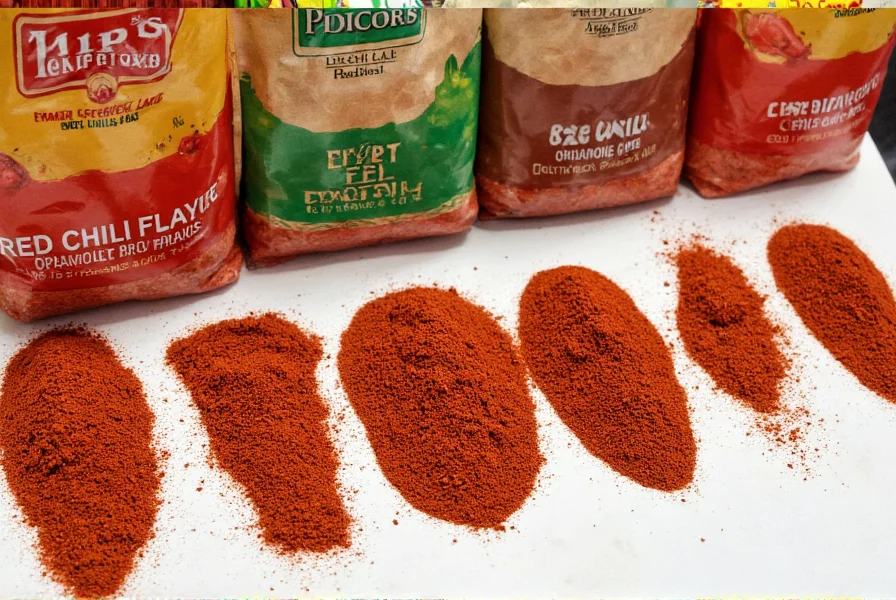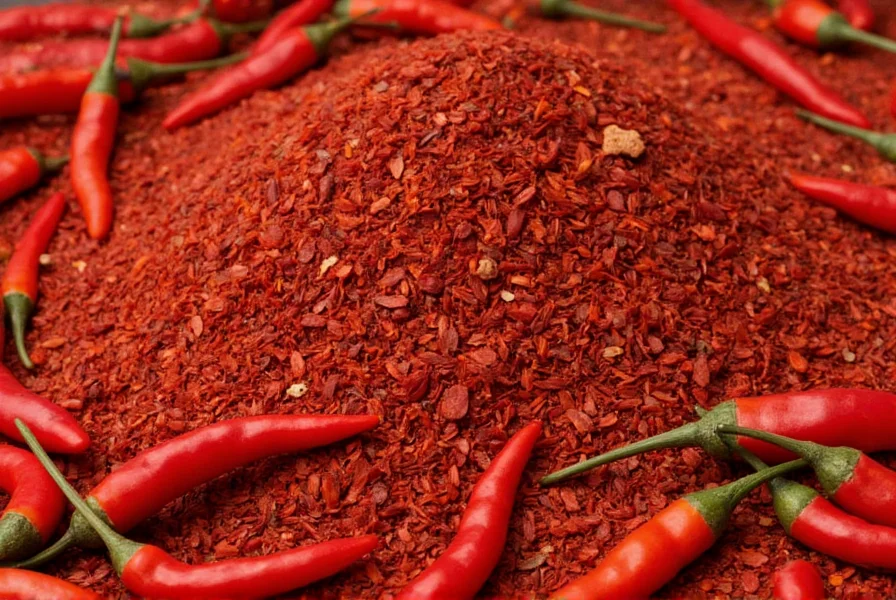Understanding what red chili flakes are begins with recognizing them as a fundamental spice in many global cuisines. These vibrant red fragments deliver a distinctive combination of heat, fruitiness, and subtle smokiness that enhances everything from Italian pasta dishes to Asian stir-fries. The primary peppers used in most commercial red chili flakes are cayenne peppers, though some blends may include other varieties like bird's eye chilies or ancho peppers depending on the desired heat level and flavor profile.
Composition and Production Process
True red chili flakes consist of nothing more than dried red chili peppers that have been crushed into small, irregular pieces. The production process begins with harvesting ripe red peppers, which are then dried either through sun-drying or using specialized dehydrators. Once fully dried, the peppers are crushed to create flakes of varying sizes, typically ranging from fine granules to larger, visible fragments.
What are red chili flakes made of specifically? The answer depends on regional variations:
| Region | Primary Pepper Used | Heat Level (Scoville) | Flavor Notes |
|---|---|---|---|
| North America | Cayenne | 30,000-50,000 | Sharp, bright heat with slight fruitiness |
| Mediterranean | Calabrian | 15,000-30,000 | Smoky, complex with berry notes |
| Asian Varieties | Bird's Eye | 50,000-100,000 | Intense, immediate heat with floral notes |
The presence of seeds in red chili flakes significantly impacts their heat level, as chili seeds contain concentrated capsaicin—the compound responsible for spiciness. Higher-quality flakes often maintain a balance of seeds and flesh to deliver consistent heat without overwhelming bitterness.
Red Chili Flakes vs. Similar Products
Many home cooks confuse red chili flakes with other spicy ingredients, but understanding the differences is crucial for proper usage in recipes. What distinguishes red chili flakes from crushed red pepper? In most commercial contexts, these terms are used interchangeably in North America, though technically "crushed red pepper" might imply slightly larger pieces.
The more significant distinction exists between red chili flakes and chili powder. While both come from dried peppers, chili powder typically contains additional spices like cumin, garlic powder, and oregano, making it a seasoning blend rather than a single-ingredient spice. This difference explains why you cannot directly substitute one for the other in recipes without adjusting other seasonings.
Culinary Applications and Usage Tips
Professional chefs and home cooks value red chili flakes for their versatility across numerous cooking techniques. Unlike pre-mixed spice blends, red chili flakes offer precise control over heat levels in dishes. When considering how to use red chili flakes in cooking, consider these professional techniques:
- Dry application: Sprinkle flakes directly onto pizza, focaccia, or roasted vegetables before cooking to allow the heat to mellow slightly while retaining texture
- Bloomed in oil: Add flakes to hot oil at the beginning of cooking to distribute heat evenly throughout the dish (ideal for pasta sauces and stir-fries)
- Finishing touch: Sprinkle flakes on completed dishes like soups, avocado toast, or eggs for immediate heat and visual appeal
- Infused oils: Create custom chili oil by steeping flakes in high-quality olive oil for several days
For those wondering how hot are red chili flakes, the heat level typically ranges from medium to medium-hot on the Scoville scale (30,000-50,000 units), though this varies significantly by brand and pepper variety. The heat develops more gradually than fresh chilies but provides longer-lasting warmth in dishes.

Substitution Options and Storage Recommendations
When you need a substitute for red chili flakes, several alternatives exist depending on your recipe requirements. For equivalent heat with different texture, crushed dried chilies work well. For similar flavor with less heat, paprika (especially hot paprika) can serve as an alternative, though it lacks the textural element. Fresh red chilies finely minced can substitute in some applications, but they provide immediate heat rather than the more gradual warmth of dried flakes.
Proper storage is essential for maintaining what are red chili flakes' potency and flavor. Store them in an airtight container away from light and heat sources. When stored correctly, red chili flakes maintain their potency for 1-2 years, though they gradually lose vibrancy after the first 6 months. Avoid storing near the stove or in clear containers that expose them to light.
Nutritional Profile and Health Considerations
Red chili flakes offer more than just heat—they contain beneficial compounds with potential health benefits. Capsaicin, the compound responsible for their spiciness, has been studied for its metabolism-boosting properties and potential pain-relieving effects. A single teaspoon (about 2 grams) of red chili flakes contains approximately:
- 12 calories
- 2.5g carbohydrates
- 0.5g protein
- 0.4g fat
- 1.2g dietary fiber
- Significant amounts of vitamin A and vitamin C
While generally safe for most people, those with sensitive digestive systems should use red chili flakes moderately. The heat can exacerbate conditions like acid reflux or irritable bowel syndrome in susceptible individuals.
Where to Buy and Quality Indicators
When determining where to buy red chili flakes, specialty spice shops often offer higher quality than standard grocery stores. Look for products with vibrant red color (dull brown indicates age), visible seed fragments, and a strong, clean aroma. Premium varieties may specify the pepper type and origin on the label.
For those interested in making their own, creating homemade red chili flakes is straightforward: dry ripe red chilies completely, then crush them using a mortar and pestle or food processor. This DIY approach allows customization of heat level by adjusting the seed-to-flesh ratio.

Common Questions About Red Chili Flakes
What is the difference between red chili flakes and crushed red pepper?
In most commercial contexts, particularly in North America, red chili flakes and crushed red pepper refer to the same product—dried, crushed red chili peppers. Some manufacturers may use slightly different grinding techniques resulting in minor texture variations, but they are functionally interchangeable in recipes.
Can I substitute paprika for red chili flakes?
You can substitute hot paprika for red chili flakes in a 2:1 ratio (use half as much paprika), but note that paprika lacks the textural element of flakes and often has a different flavor profile. Sweet paprika won't provide the same heat level, so ensure you're using hot paprika for substitution.
How much heat do red chili flakes add to a dish?
The heat level varies by brand and pepper variety, but generally, 1/4 teaspoon of red chili flakes provides noticeable heat for 4 servings of a dish. Start with small amounts (1/8 teaspoon) and adjust to taste, as the heat intensifies during cooking and can vary significantly between brands.
Do red chili flakes go bad?
Red chili flakes don't technically spoil but lose potency over time. Properly stored in an airtight container away from light and heat, they maintain optimal flavor for 1-2 years. Signs of degradation include faded color (from vibrant red to dull brown), diminished aroma, and reduced heat level.
Are red chili flakes gluten-free?
Pure red chili flakes made from only dried peppers are naturally gluten-free. However, some commercial products may be processed in facilities that handle gluten-containing products, so check labels if you have celiac disease or severe gluten sensitivity. Avoid any blends that include wheat-based fillers.











 浙公网安备
33010002000092号
浙公网安备
33010002000092号 浙B2-20120091-4
浙B2-20120091-4